
The Enchanting Medina of Marrakech
Discover the vibrant heart of Marrakech in the Medina, a UNESCO World Heritage Site brimming with history, culture, and bustling souks.
Step into the heart of Marrakech by venturing into its historic Medina, a UNESCO World Heritage Site. The Medina is a labyrinth of narrow streets and alleys, vibrant souks, and ancient buildings that transport you back in time. As you wander through this bustling district, you'll encounter a myriad of sights, sounds, and scents that define the rich cultural tapestry of Morocco. The Medina is home to some of Marrakech's most iconic landmarks. The Koutoubia Mosque, with its stunning minaret, stands as a beacon of Islamic architecture. Nearby, the Saadian Tombs reveal a hidden history dating back to the 16th century. The Bahia Palace offers a glimpse into the opulent lives of Moroccan royalty with its intricate mosaics and lush gardens. One of the highlights of visiting the Medina is exploring the souks, where you can find everything from spices and textiles to pottery and jewelry. Each market area specializes in different crafts, providing a unique shopping experience. Don't miss the chance to haggle with local vendors, a tradition that adds to the charm of the Medina. After a day of exploration, unwind at one of the Medina's many riads, traditional Moroccan houses with interior gardens. These riads offer a serene escape from the hustle and bustle outside, allowing you to relax and soak in the ambiance of this historic neighborhood.
Local tips in Medina
- Wear comfortable shoes as the narrow streets and alleys require a lot of walking.
- Visit early in the morning or late in the afternoon to avoid the midday heat and crowds.
- Carry small denominations of local currency for purchases and tips.
- Be prepared to haggle in the souks; it's part of the shopping experience.
- Stay in a riad within the Medina for an authentic Moroccan experience.
The Enchanting Medina of Marrakech
Step into the heart of Marrakech by venturing into its historic Medina, a UNESCO World Heritage Site. The Medina is a labyrinth of narrow streets and alleys, vibrant souks, and ancient buildings that transport you back in time. As you wander through this bustling district, you'll encounter a myriad of sights, sounds, and scents that define the rich cultural tapestry of Morocco. The Medina is home to some of Marrakech's most iconic landmarks. The Koutoubia Mosque, with its stunning minaret, stands as a beacon of Islamic architecture. Nearby, the Saadian Tombs reveal a hidden history dating back to the 16th century. The Bahia Palace offers a glimpse into the opulent lives of Moroccan royalty with its intricate mosaics and lush gardens. One of the highlights of visiting the Medina is exploring the souks, where you can find everything from spices and textiles to pottery and jewelry. Each market area specializes in different crafts, providing a unique shopping experience. Don't miss the chance to haggle with local vendors, a tradition that adds to the charm of the Medina. After a day of exploration, unwind at one of the Medina's many riads, traditional Moroccan houses with interior gardens. These riads offer a serene escape from the hustle and bustle outside, allowing you to relax and soak in the ambiance of this historic neighborhood.
Iconic landmarks you can’t miss
Jemaa el-Fnaa
Experience the vibrant heart of Marrakesh at Jemaa el-Fnaa, a cultural landmark brimming with food, entertainment, and local traditions.
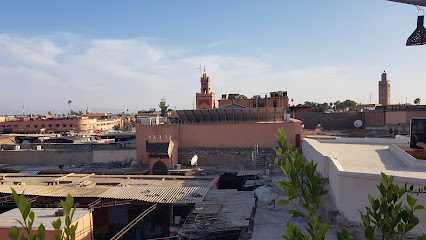
Koutoubia
Discover the Koutoubia Mosque, Marrakesh's iconic landmark, showcasing stunning architecture and rich history in the heart of the Medina.

Saadian Tombs
Discover the Saadian Tombs: A Historical Jewel of Marrakesh, Showcasing Opulent Architecture and Serene Gardens in a Captivating Setting.
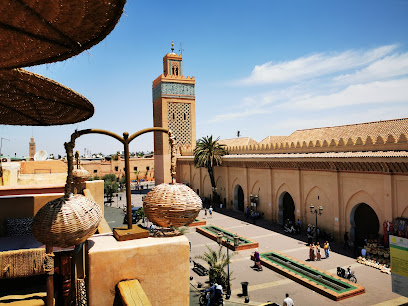
Le Jardin Secret
Explore the serene beauty of Le Jardin Secret, a lush botanical garden and art haven in the heart of Marrakesh's vibrant Medina.
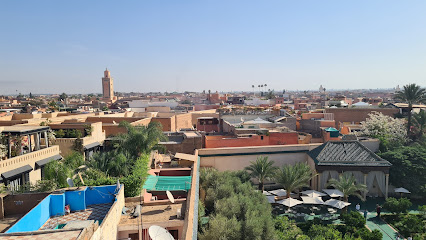
Medina of Marrakesh
Discover the vibrant culture and rich history of the Medina of Marrakesh, a UNESCO World Heritage site filled with enchanting sights and sounds.
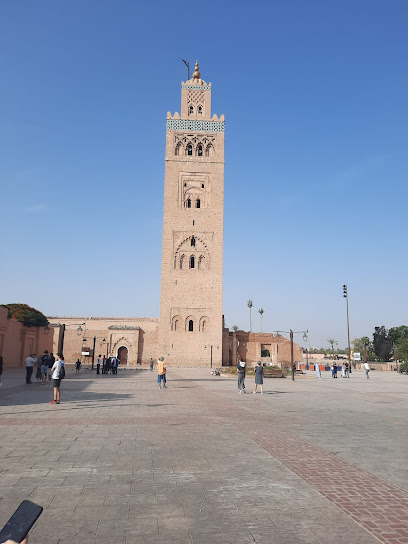
Minaret de la Koutoubia
Discover the architectural wonder of Minaret de la Koutoubia, a UNESCO World Heritage site and a must-visit icon in Marrakech's historic Medina.

Wall Marrakech
Explore the historical marvel of Wall Marrakech, a stunning landmark that showcases the rich cultural heritage of Morocco's enchanting Medina.
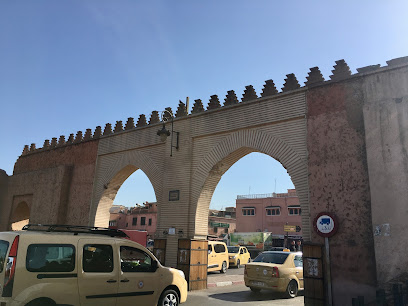
Kings of Morocco history street
Explore the rich tapestry of Moroccan history at Kings of Morocco History Street, a vibrant destination filled with culture, stories, and stunning architecture.
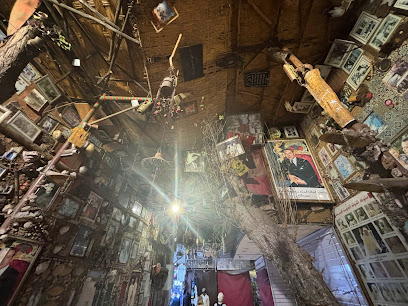
Fuente de Mouassine
Explore the captivating Fuente de Mouassine, a historic fountain in Marrakesh's Medina, showcasing stunning Moroccan architecture and vibrant local culture.

Mezquita
Experience the architectural splendor and cultural richness of the Mezquita in Marrakesh, a must-see destination for every traveler.

Unmissable attractions to see
Koutoubia
Discover the architectural beauty and spiritual significance of Koutoubia Mosque, Marrakech's iconic historical landmark and a must-see attraction.
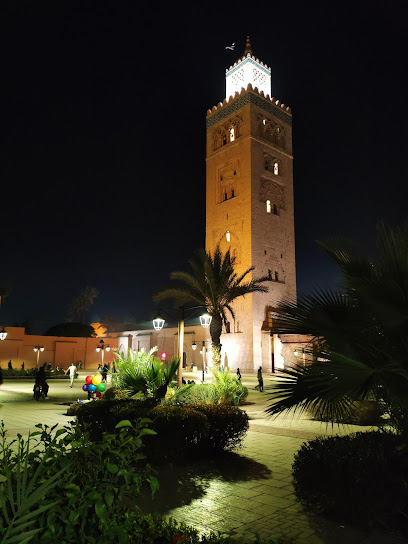
Bahia Palace
Explore the enchanting Bahia Palace in Marrakesh, a historical landmark showcasing stunning Moroccan architecture and lush gardens.
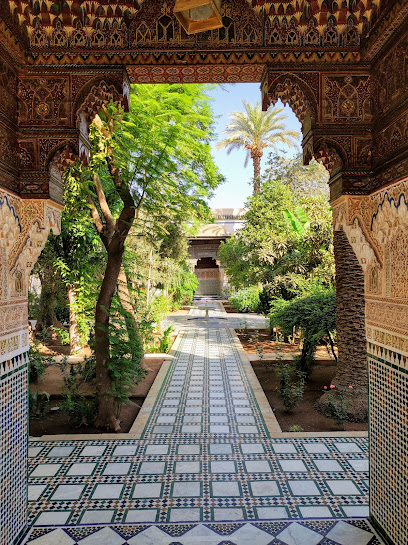
Badi Palace
Discover the architectural beauty and rich history of Badi Palace, a historical gem in the heart of Marrakech.
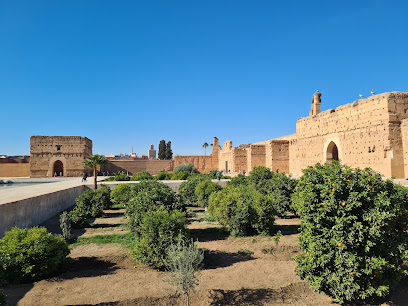
Marrakech Museum
Explore the vibrant art and rich history of Morocco at the Marrakech Museum, a cultural gem in the heart of the Medina.
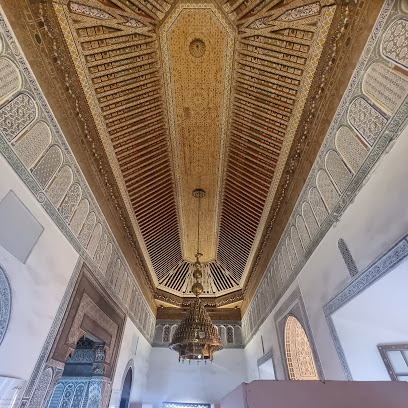
Dar El Bacha Museum
Explore the artistic heritage of Morocco at Dar El Bacha Museum, a cultural treasure in the heart of Marrakech's Medina.
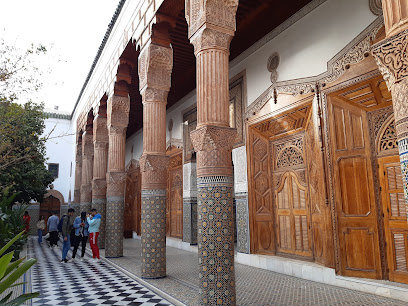
Medina of Marrakesh
Explore the Medina of Marrakesh: A vibrant cultural landmark filled with history, shopping, and culinary delights in the heart of Morocco.
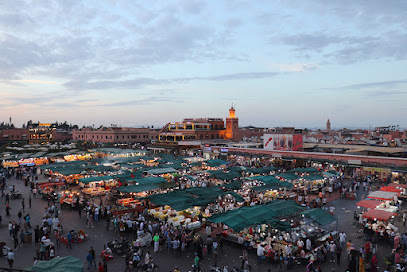
Essential places to dine
Le Bistro Arabe - Moroccan Jazz Restaurant in Marrakech
Experience the vibrant fusion of Moroccan cuisine and live jazz at Le Bistro Arabe in Marrakech's historic Medina.
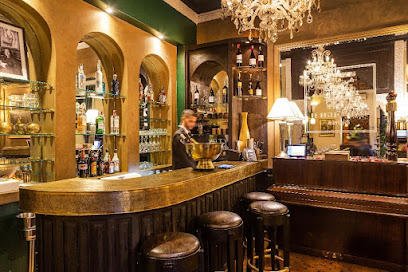
Nomad Marrakech
Discover the essence of Moroccan flavors at Nomad Marrakech – where tradition meets modernity in an unforgettable dining experience.
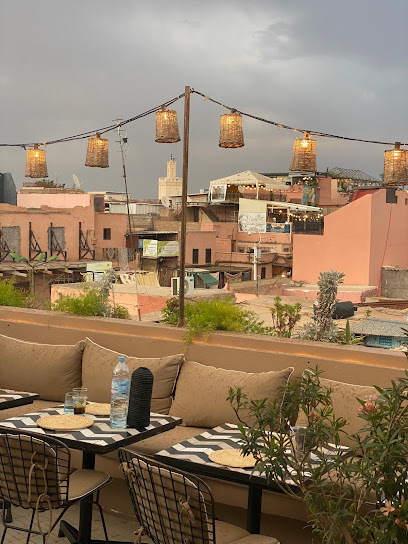
Le Jardin Restaurant Marrakech Medina
Discover Le Jardin Restaurant in Marrakech's Medina - A lush garden oasis offering exquisite Moroccan cuisine and delightful ambiance.

Le terrasse des épices
Experience authentic Moroccan cuisine with breathtaking views at Le Terrasse des Épices in Marrakesh's vibrant Medina.
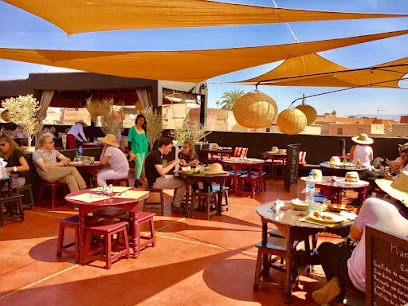
Kui-Zin
Experience the fusion of Moroccan tradition and Italian flair at Kui-Zin in Marrakesh - a must-visit culinary destination.
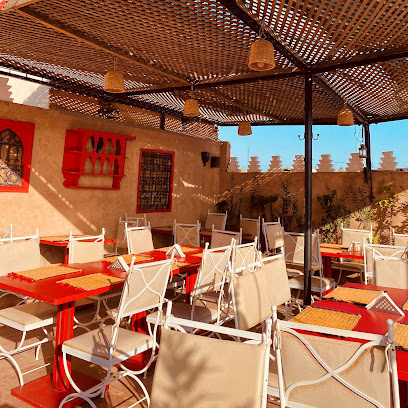
Café Babouche medina
Discover authentic Moroccan flavors at Café Babouche in the vibrant Medina of Marrakech – a culinary delight not to be missed.

La fontaine des épices
Experience authentic Moroccan cuisine in an enchanting setting at La Fontaine des Épices in Marrakech's vibrant Medina.
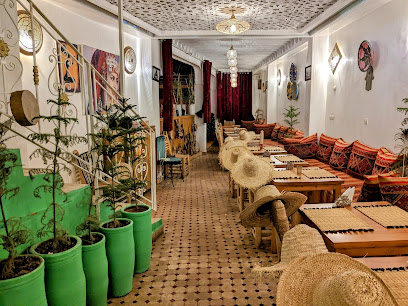
Un déjeuner a Marrakech
Experience authentic Moroccan cuisine at Un Déjeuner à Marrakech - where tradition meets innovation in every delicious dish.
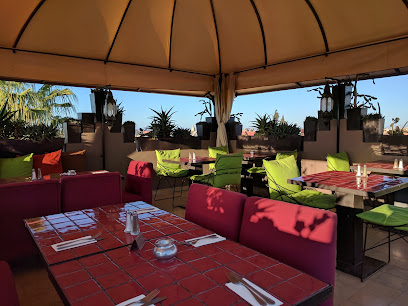
Narwama
Experience authentic Moroccan flavors at Narwama - where every dish tells a story of tradition and taste.
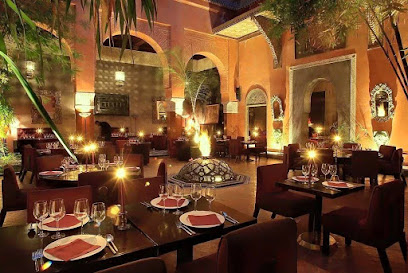
Restaurant Casa Lalla
Experience the rich flavors of Morocco at Restaurant Casa Lalla in Marrakesh's enchanting Medina.
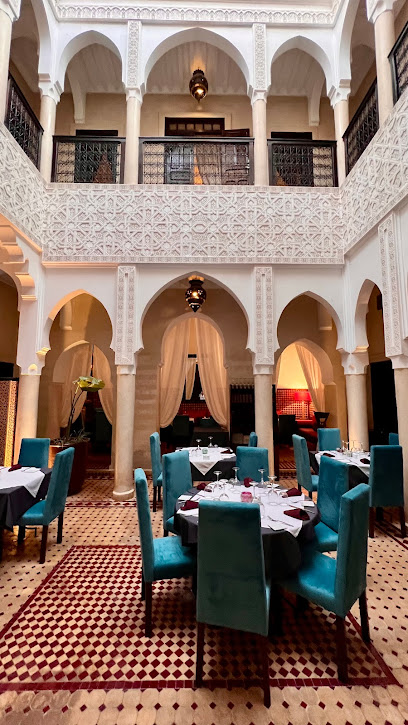
Markets, malls and hidden boutiques
Max & Jan Medina
Explore the vibrant world of Moroccan fashion at Max & Jan Medina, where unique clothing meets artistic craftsmanship in Marrakech.
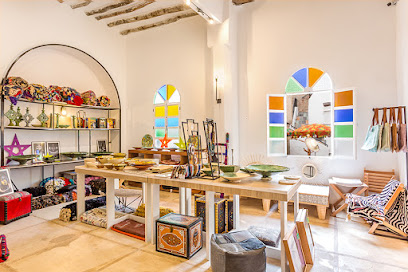
Medina Mall Marrakech Shopping Center Artisanal
Discover the artistic heart of Marrakech at Medina Mall, where shopping, dining, and cultural experiences come together.
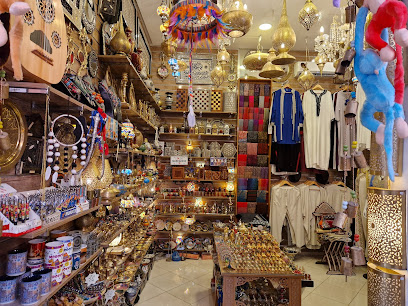
Souk cherifia
Explore Souk Cherifia: A vibrant shopping mall in Marrakesh offering unique crafts, local delicacies, and an immersive cultural experience.
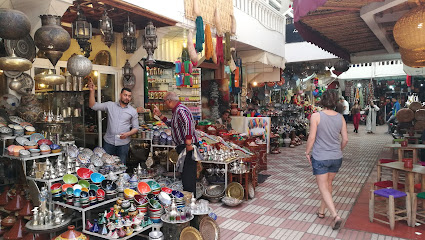
Rebeel_ store.
Explore Rebeel Store in Marrakech for unique vintage clothing that reflects the rich culture and artistry of Morocco.

Boutique Majorelle
Discover the elegance of Moroccan craftsmanship at Boutique Majorelle, where every item is a piece of art waiting to be explored.
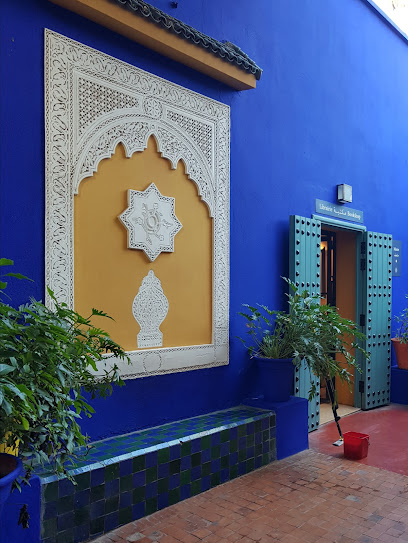
boutique la vannerie
Discover the charm of Moroccan craftsmanship at Boutique La Vannerie, your go-to gift shop in the heart of Marrakech's vibrant Medina.
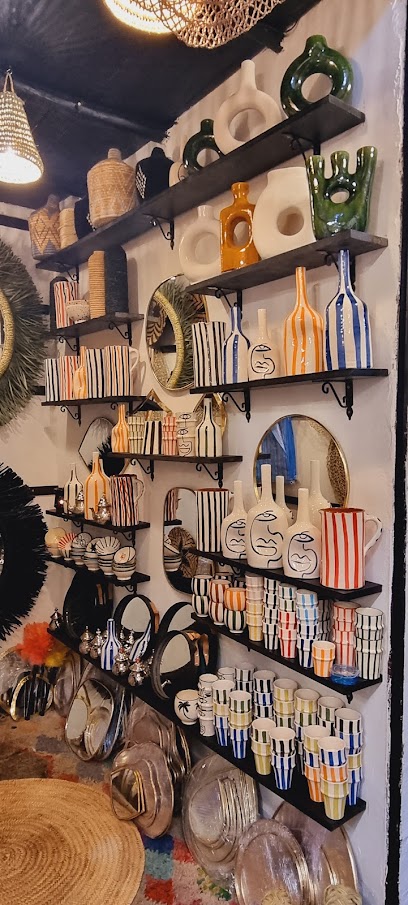
Haj Mbarek Store
Explore authentic Moroccan handicrafts at Haj Mbarek Store in Souk Semmarine, Marrakesh – a treasure trove of unique gifts and souvenirs.
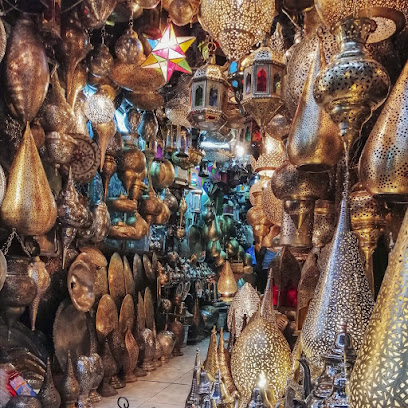
Funky Cool Medina
Immerse yourself in the vibrant culture of Marrakesh at Funky Cool Medina, where unique fashion meets authentic Moroccan artistry.
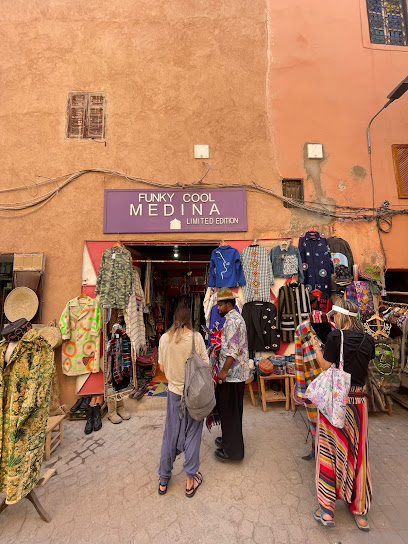
Boutique EL Fenn
Explore the vibrant artistry of Marrakech at Boutique EL Fenn, where unique gifts reflect the rich Moroccan heritage and craftsmanship.
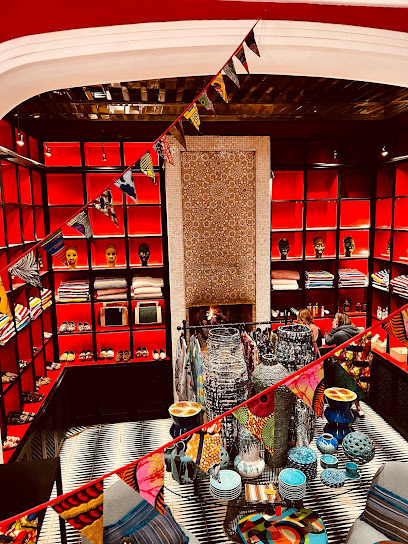
JLD Concept Store
Explore JLD Concept Store in Marrakech for authentic Moroccan gifts, artisanal crafts, and a unique shopping experience that reflects local culture.
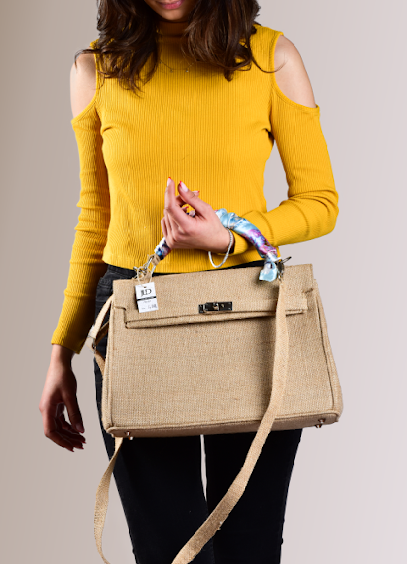
Essential bars & hidden hideouts
La Pergola
Experience the vibrant culinary scene of Marrakech at La Pergola, where Moroccan flavors meet lively entertainment in the heart of the Medina.
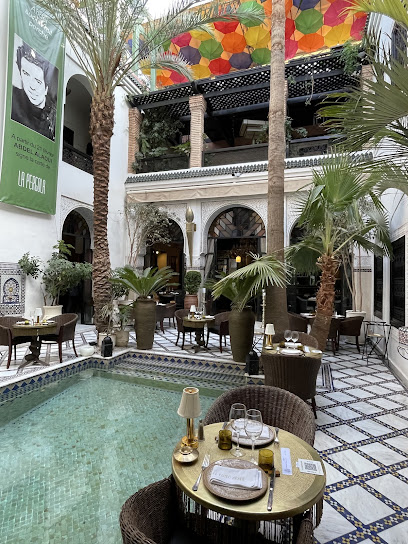
Le Salama Sky-bar
Experience the vibrant flavors of Morocco at Le Salama Sky-bar, a chic rooftop bar in the heart of Marrakech with stunning views and exquisite cuisine.
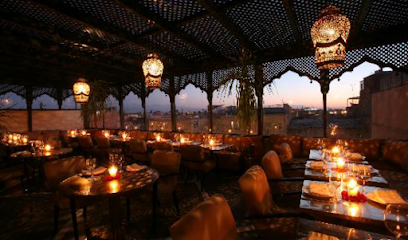
Kosybar Marrakech (Restaurant Bar & Spa)
Experience the vibrant fusion of Moroccan and Japanese cuisines at Kosybar Marrakech, where culinary excellence meets a serene atmosphere.
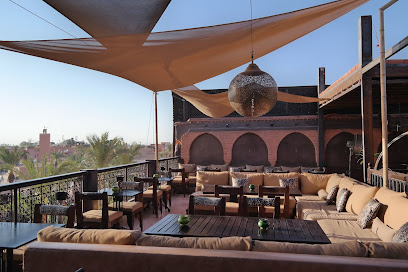
M Rooftop by Medina Heritage
Experience the fusion of tradition and modernity at M Rooftop, offering stunning views and exquisite Moroccan cuisine in the heart of Marrakech.
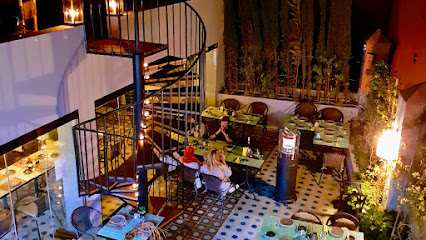
Churchill Bar
Experience the elegance of The Churchill Bar at La Mamounia, where classic charm meets modern luxury in the heart of Marrakech.
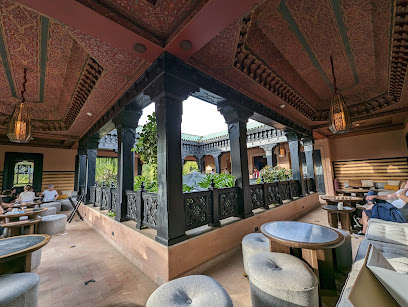
Le Bar Majorelle
Discover the enchanting Le Bar Majorelle in Marrakech, where modern elegance meets traditional Moroccan charm for an unforgettable nightlife experience.
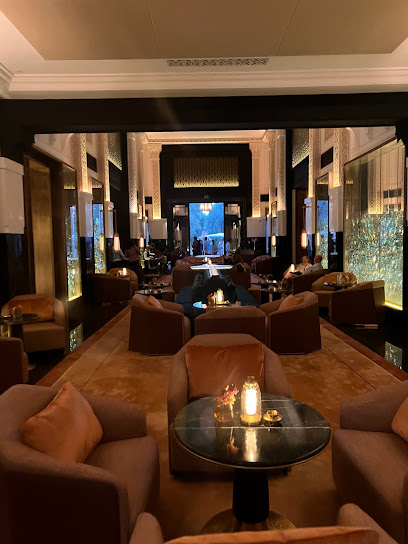
Anika Lounge & Bar Marrakech
Discover Anika Lounge & Bar in Marrakech – a perfect blend of Moroccan tradition and modern relaxation, ideal for unwinding with exquisite drinks.
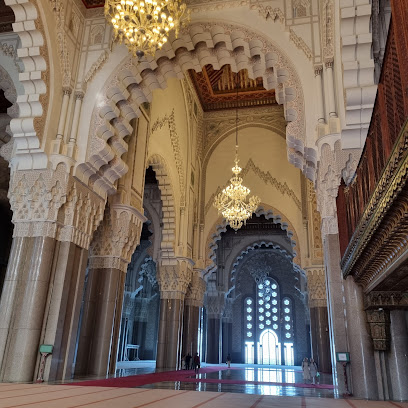
Nuphar Bar
Experience the vibrant flavors of Marrakech at Nuphar Bar, where delightful tapas and aromatic coffee create a perfect oasis in the Medina.
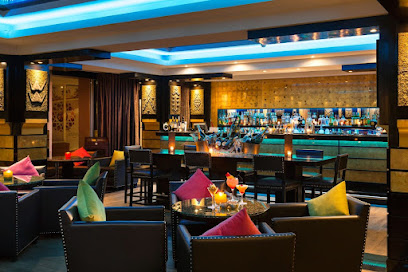
K'ozi Bar
Discover the charm of K'ozi Bar in Marrakech, where local culture meets vibrant nightlife in a stunning atmosphere.

Restaurant
Experience the essence of Marrakesh with refreshing drinks and a lively ambiance in the heart of the Medina.

Local Phrases
-
- Helloسلام
[salam] - Goodbyeوداعا
[wadaa'an] - Yesنعم
[naam] - Noلا
[la] - Please/You're welcomeمن فضلك
[min fadlik] - Thank youشكرا
[shukran] - Excuse me/Sorryعذرا
['udhran] - How are you?كيف حالك؟
[kayfa halk?] - Fine. And you?بخير. وأنت؟
[bikhayr. wa'ant?] - Do you speak English?هل تتكلم الإنجليزية؟
[hal tatakallam al'inglizia?] - I don't understandلا أفهم
[la afham]
- Helloسلام
-
- I'd like to see the menu, pleaseأريد أن أرى القائمة، من فضلك
[uridu an ara alqaimah, min fadlik] - I don't eat meatأنا لا آكل اللحم
[ana la aakol allaham] - Cheers!في صحتك!
[fi sahtak!] - I would like to pay, pleaseأريد أن أدفع، من فضلك
[uridu an adfa', min fadlik]
- I'd like to see the menu, pleaseأريد أن أرى القائمة، من فضلك
-
- Help!النجدة!
[alnajdah!] - Go away!اذهب بعيدا!
[adhhab ba'eedan!] - Call the Police!اتصل بالشرطة!
[atasil bialsurata!] - Call a doctor!اتصل بالطبيب!
[atasil baltabib!] - I'm lostلقد ضللت الطريق
[laqad dalalt altariq] - I'm illأنا مريض
[ana mareed]
- Help!النجدة!
-
- I'd like to buy...أريد أن أشتري...
[uridu an ashtari...] - I'm just lookingأنا فقط أتفرج
[ana faqat atfarrag] - How much is it?كم هو ثمنه؟
[kam huwa thamanuh?] - That's too expensiveهذا غالي جدا
[hatha ghali jiddan] - Can you lower the price?هل يمكنك خفض السعر؟
[hal yumkinuka khafdh alsu'r?]
- I'd like to buy...أريد أن أشتري...
-
- What time is it?كم الساعة؟
[kam alsaa'ah?] - It's one o'clockالساعة الواحدة
[alsaa'ah alwahidah] - Half past (10)الساعة العاشرة والنصف
[alsaa'ah al'ashirah walnisf] - Morningالصباح
[assaabah] - Afternoonالمساء
[almasa'] - Eveningالمساء
[almasa'] - Yesterdayأمس
[ams] - Todayاليوم
[alyawm] - Tomorrowغدا
[ghadan] - 1واحد
[wahid] - 2اثنان
[ithnan] - 3ثلاثة
[thalathah] - 4أربعة
[arba'ah] - 5خمسة
[khamsah] - 6ستة
[sittah] - 7سبعة
[sab'ah] - 8ثمانية
[thamaniah] - 9تسعة
[tis'ah] - 10عشرة
[asharah]
- What time is it?كم الساعة؟
-
- Where's a/the...?أين ...؟
[ayn ...?] - What's the address?ما هو العنوان؟
[ma huwa al'anaan?] - Can you show me (on the map)?هل يمكنك أن تريني (على الخريطة)؟
[hal yumkinuka an tureeni (ala alkhareetah)?] - When's the next (bus)?متى الحافلة التالية؟
[mata alhafilat altaliat?] - A ticket (to ....)تذكرة (إلى ...)
[tazkirah (ila ...)]
- Where's a/the...?أين ...؟
History of Medina
-
Marrakech was founded in 1070 by the Almoravid dynasty, and the Medina, or old city, was established shortly thereafter. This period marked the beginning of Marrakech as a significant political, economic, and cultural center in Morocco. The city was designed with the Medina at its core, featuring a dense network of narrow streets, vibrant souks, and stunning architecture that reflects Islamic design principles.
-
During the 16th century, the Saadian dynasty ruled Marrakech and significantly contributed to the city's architectural heritage. The Medina became a canvas for exquisite mosques, palaces, and gardens. Notable structures such as the Saadian Tombs and the Badi Palace were built during this time, showcasing intricate tilework and elaborate stucco designs that define the aesthetic of the Medina.
-
In the early 20th century, Morocco became a French protectorate, and the Medina faced various challenges as colonial authorities sought to modernize the city. While the French developed the modern parts of Marrakech, the Medina retained its historical charm, although it experienced neglect. The colonial period also saw the establishment of new trade routes and the introduction of modern amenities, which began to influence the traditional lifestyle of its inhabitants.
-
Following Morocco's independence in 1956, efforts were made to restore and preserve the Medina's historical sites. The Medina has since been recognized as a UNESCO World Heritage site, highlighting its cultural significance. Today, the area is a bustling hub for artisans, merchants, and tourists, continuing to showcase traditional Moroccan crafts, cuisine, and hospitality.
-
In recent years, the Medina faces challenges such as urbanization, tourism pressure, and the need for sustainable development. Various organizations and local authorities are working to balance modernization with the preservation of the Medina's rich cultural heritage, ensuring that this historical neighborhood remains a vibrant part of Marrakech's identity.
Medina Essentials
-
Medina is centrally located in Marrakech and easily accessible from other neighborhoods. From the modern Gueliz area, you can take a taxi or a local bus, which typically takes around 10-15 minutes depending on traffic. If you are coming from the airport, a taxi ride to Medina will take approximately 15-20 minutes. Alternatively, you can opt for a pre-arranged shuttle service or a private transfer for convenience.
-
The Medina is a maze of narrow streets, best explored on foot. Walking allows you to fully appreciate the vibrant atmosphere, local shops, and historical sites. While bicycles are available for rent, they are not recommended due to the crowded and winding streets. For longer distances, small taxis (petit taxis) are a convenient option. Avoid using larger buses within the Medina, as they do not operate in the narrow alleys.
-
Medina is generally safe for tourists, but caution is advised. Petty crimes such as pickpocketing can occur, particularly in crowded areas like Jemaa el-Fnaa and souks. Avoid poorly lit streets at night and keep your belongings secure. Areas to be cautious in include the outskirts of the Medina, particularly around the less frequented alleys after dark.
-
In case of emergency, dial 19 for police or 15 for medical assistance in Morocco. It is advisable to have travel insurance that covers emergencies. The nearest hospital is the Hôpital Ibn Tofail, which is equipped to handle urgent medical needs. For minor medical issues, there are pharmacies scattered throughout the Medina.
-
Fashion: Do dress modestly and comfortably; lightweight, loose-fitting clothes are ideal. Avoid wearing overly revealing outfits. Religion: Do respect local customs, especially in religious sites; women should cover their heads when entering mosques. Public Transport: Do be respectful, keep your voice down, and offer your seat to the elderly. Don’t eat or drink in public transport. Greetings: Do greet locals with a firm handshake and a smile. Eating & Drinking: Do try local dishes and drink mint tea when offered. Don’t refuse food or drink, as it is considered impolite.
-
To experience Medina like a local, visit the local markets early in the morning for fresh produce and traditional crafts. Engage with shopkeepers and artisans to learn about their crafts. Attend a local cooking class to discover Moroccan culinary traditions. Explore hidden riads and less-traveled alleyways for authentic experiences, and don’t hesitate to get lost in the Medina's charm.
-
Understanding local etiquette is key to a respectful visit. When invited into a home, it’s customary to remove your shoes. If you're visiting a mosque, be sure to ask for permission if you're unsure about entering. Always use your right hand for eating and passing items, as the left hand is considered unclean in Moroccan culture.
-
The local currency is the Moroccan Dirham (MAD). It's advisable to carry cash, especially for small purchases in local markets. Credit cards are accepted in many hotels and larger shops, but not everywhere. ATMs are available throughout the Medina, but be cautious when withdrawing cash, and use machines located in well-lit areas.
Nearby Cities to Medina
-
Things To Do in Taroudant
-
Things To Do in Essaouira
-
Things To Do in Agadir
-
Things To Do in Casablanca
-
Things To Do in Meknes
-
Things To Do in Fes
-
Things To Do in Asilah
-
Things To Do in Chefchaouen
-
Things To Do in Tangier
-
Things To Do in Tetouan
-
Things To Do in Europa Point
-
Things To Do in Gorham's Cave Complex
-
Things To Do in St. Michael's Cave
-
Things To Do in Alameda Botanic Gardens
-
Things To Do in Queensway Quay Marina













